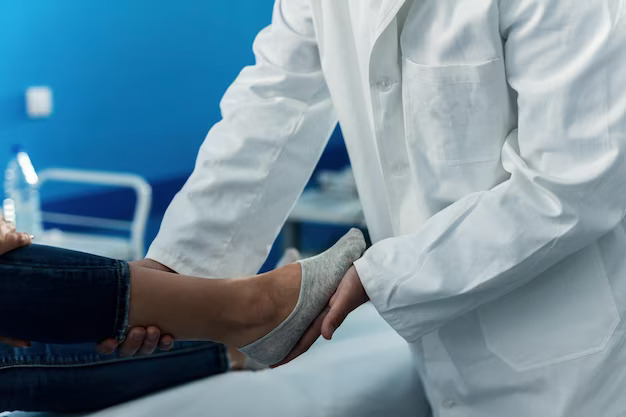Whether you’re a gifted athlete who trains regularly or an office worker who spends his entire life hunched in front of a desk daily doesn’t matter. Everyone is vulnerable to an orthopaedic injury that could strike at any time. Many orthopaedic injuries occur because of an accident, and we can’t do much about them but get the orthopaedic urgent care they need. Nevertheless, while accidents certainly happen, we can prevent most orthopaedic injuries and succeed. Here are some tips and exercises that can help you prevent common orthopaedic injuries.
When suffering from common joint injuries, follow the RICE protocol:
R: One should take complete rest after an acute injury; the problem will alleviate with excessive movement of the joints.
I: Apply ice packs to the area at least 3-4 times for 10 to 15 minutes around the joint area where it hurts; ice packs reduce the inflammation and help in healing.
C: Apply compression with crepe bandage for knee injuries as it reduces the excessive swelling and supports the part.
E: Elevate the injured body part, reducing the swelling as it increases venous blood flow away from the joint towards the central body.
RICE protocol can be followed for bone and joint injuries like ankle, foot, wrist, elbow and fingers. We can apply any standard pain ointment or balm but avoid rigorously massaging the area as it leads to further injury and increased reactionary circulation leading to increased swelling
Here are some tips and exercises that can help you prevent common orthopaedic injuries.
- Get regular exercise
Regular exercise provides many health benefits, preventing orthopaedic injuries included. As you regularly perform strength training and endurance exercises, your muscles and joints become potent and tougher, allowing you to handle the effects of high-impact activities better. Stronger muscles provide additional bone protection, which regular exercise can make denser - Stretch your muscles
Stretching is vital to working out, as it helps improve your body’s flexibility and aids blood flow to your muscles. Better blood flow to the muscles improves their nutrient absorption ability, and discarding lactic acid and other waste products becomes manageable. On top of helping you become more flexible, stretching exercises can also provide additional benefits, such as increasing your range of motion, improving your posture, and calming your mind - Maintain a healthy weight
Being overweight strains your weight-bearing joints, such as your knees, ankles, hips, and back. Every pound of excess weight you carry results in an additional four pounds of extra pressure on your weight-bearing joints. Your chance of developing joint damage can reduce by achieving and maintaining a healthy weight, which will lessen the strain on your joints. It would also be great to consume healthy amounts of dietary fats that help with nutrient absorption and hormone production, which are critical in protecting your muscles and joints from injury. - Wear the right shoes
Whenever you stand, walk, jog, or run for specific stretches, you put a certain amount of strain on your legs’ structural makeup. Over time, the effects of that strain will accumulate and lead to various musculoskeletal issues. However, wearing footwear appropriate for the activity you’re engaging in should help reduce the pressure on your feet and legs. There’s a veritable treasure trove of shoes designed to cushion your joints and bones, from the most comfortable running footwear to basketball shoes that effectively absorb the impact of landing on the court. - Go swimming
If you want a workout that doesn’t strain your joints and bones too much, go swimming instead! Swimming is a low-impact activity that gives you excellent cardiovascular exercise without damaging orthopaedic health. When you go swimming, you get the opportunity to increase not just your flexibility but your range of motion as well, both of which reduce your risk of orthopaedic injury. - How does Sancheti Hospital help you?
Through minimal incisions, orthopaedic physicians at Sancheti Hospital Pune undertake joint replacement surgeries. This process is called minimally invasive surgery. It might result in less bleeding, a smaller scar, less pain, and a simpler recovery. Additionally, these procedures may needd specialised tools and materials, such as computer-generated tailored surgery resection guides, computer-assisted surgical intervention, and computer-assisted robotics. Sancheti Hospital has state-of-the-art machinery to ensure excellent and smooth joint replacement surgery, guided by the able hands of surgeons with years of expertise and knowledge.
FAQ
How can you help avoid injury to your bones and joints?
Injury-prevention tips are
- Avoid doing too much, too soon.
- Maintain strength in the muscles surrounding the joint area.
- Train smart by cross-training
- Never skip your warm-up or cool-down.
- Always use proper technique and body mechanics when playing sports involving repetitive motion, such as tennis and golf.
- Be in shape.
What is the best exercise to protect joints
The best exercise to protect joints includes walking, bicycling, swimming and water aerobics. If working out for 10 minutes is easier on your joints, do that.
What are four ways to keep your joints healthy?
Here are four ways to keep your joints healthy:
- Maintain a healthy weight
- Keep moving
- Use correct posture
- Eat right.
How do you keep your bones, muscles and joints healthy?
Exercise is a fantastic way to preserve your bone and joint health. Weight-bearing exercises– such as using hand weights, doing bodyweight exercises like push-ups or squats, or even walking at an incline–can help keep your bones healthy by increasing bone density.
What foods are good for your joints?
Here are a few foods that help reduce joint pain:
- Omega-3 fatty acids/fish oils
- Nuts and seeds
- Brassica vegetables
- Colourful fruits
- Olive oil
- Lentils and beans
- Garlic and root vegetables
- Whole grains








0 comments on “How to prevent common orthopaedic injuries: Tips & exercises for keeping your joints & bones healthy”